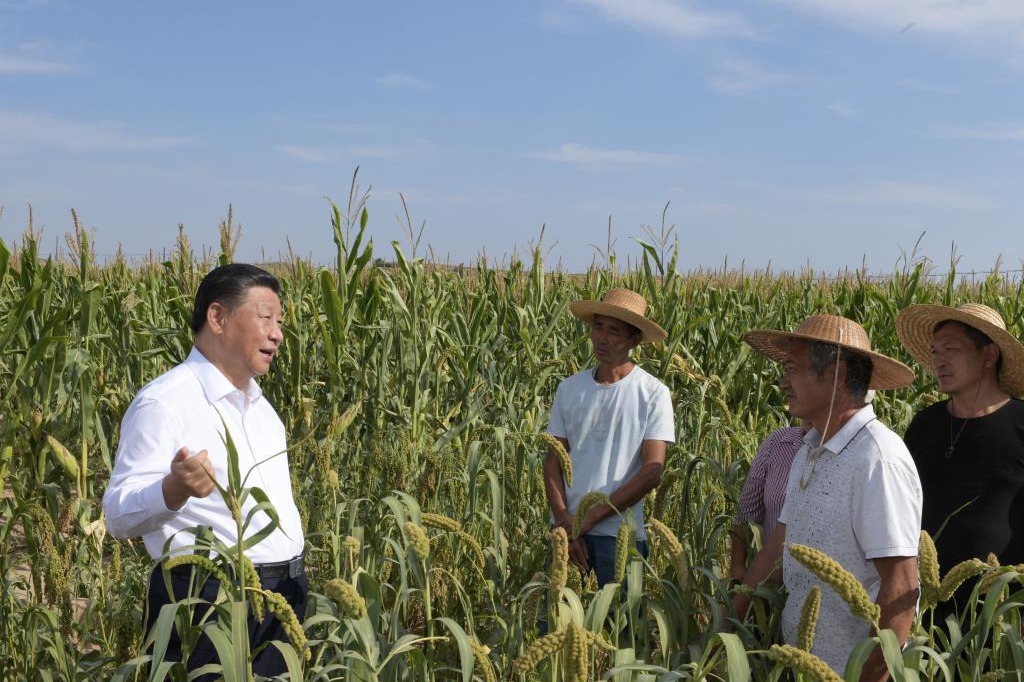Embrace a more proactive fiscal policy in 2025


The recent meetings of the Political Bureau of the Communist Party of China Central Committee and Central Economic Work Conference have underscored the importance of implementing a more aggressive fiscal policy in 2025. It is crucial to highlight that this is not a short-term economic stimulus measure. Instead, it is a significant and prudent strategic decision, leveraging China's robust economic foundation and institutional advantages to seize historical opportunities and navigate a complex international economic landscape.
Fiscal policy is the cornerstone of macroeconomic regulation. Since the 18th National Congress of the Communist Party of China in 2012, proactive fiscal policies have been continuously strengthened. Annual tax cuts have increased from hundreds of billions to trillions of yuan, and the fiscal deficit has expanded from 1 trillion yuan ($137.06 billion) to 4 trillion yuan. In some years, the deficit ratio has even surpassed the theoretical threshold of 3 percent.
Local government special bonds have surged from several hundred billion to 3.9 trillion yuan, and the overall government debt ratio has exceeded 50 percent. These measures have directly increased the disposable income of businesses and individuals, driving sustained social investment and providing strong support to stabilize China's economic growth rate at around 5 percent.
The implementation of a more aggressive fiscal policy in 2025 will involve moderately increasing the fiscal deficit ratio, intensifying fiscal spending and issuing ultra-long-term special government bonds and local government special bonds. This high-intensity fiscal policy aims to address several key challenges and holds significant implications:
The first is to advance the Chinese path to modernization, which entails building a new development framework, advancing new quality productive forces, enhancing comprehensive national strength and improving the living standards of 1.4 billion people while ensuring smooth domestic and international economic circulation. This requires substantial government fiscal investment to create the necessary conditions for accelerated Chinese path to modernization.
The second is to strengthen countercyclical adjustments. Since 2010, China has maintained its position as the world's second-largest economy, with its GDP accounting for 18 percent of the global total. The growth rates of urban workers' average wages and total retail sales of consumer goods have long exceeded the economic growth rate, indicating a stable economic foundation with numerous advantages and great potential.
However, the adverse effects of the external environment have deepened, domestic demand expansion has slowed down, and employment and income growth have become more challenging. China now faces an unprecedented economic rebalancing challenge because of which the country must chart a course for continued growth and structural optimization, achieving high-quality development in the face of rising anti-globalization trends. Addressing these challenges requires adopting more proactive macroeconomic policies and implementing extraordinary countercyclical adjustments. Therefore, it is necessary to expand fiscal spending further to stimulate synchronized growth in effective supply and demand.
The third is to promote social development. China's development focuses on the comprehensive development of its people. Proactive fiscal policies foster the integration of economic and social development. The future of China's social development will continue to progress steadily, with the overall goal of achieving equal access to basic public services. This necessitates increased government efforts to address various challenges comprehensively, including population aging (with nearly 300 million elderly citizens), new urbanization, rural vitalization, environmental protection, and healthcare.
Enhancing fiscal spending intensity and restructuring fiscal expenditure must go hand in hand, inevitably expanding the fiscal deficit. In essence, China must tackle the immense task of improving public welfare for 17 percent of the global population with a per capita GDP of just over $10,000. This requires moderately expanding debt to achieve a long-term balance between public service level improvements, economic growth, and fiscal spending.
It is essential to emphasize that a more aggressive fiscal policy is not a hasty move but a strategic, well-timed decision. First, China's money supply now exceeds 200 percent of its GDP, yet private fixed-asset investment growth has been declining, falling below 1 percent for both 2022 and 2023. This indicates ample room for government debt expansion, which will not crowd out private investment but rather stimulate its growth and absorb liquidity.
Second, China will adopt a moderately loose monetary policy, including timely reductions in reserve requirements and interest rates, directly lowering government debt costs. Finally, China will further deepen comprehensive reforms, with the coming years expected to see a flurry of reform measures. Notably, constructing a high-level socialist market economy and accelerating the development of a large-scale unified socialist market will undoubtedly enhance the transmission effects of proactive fiscal policies.
The author is a researcher at the Chinese Academy of Fiscal Sciences.
The views don't necessarily represent those of China Daily.
If you have a specific expertise, or would like to share your thought about our stories, then send us your writings at opinion@chinadaily.com.cn, and comment@chinadaily.com.cn.


































